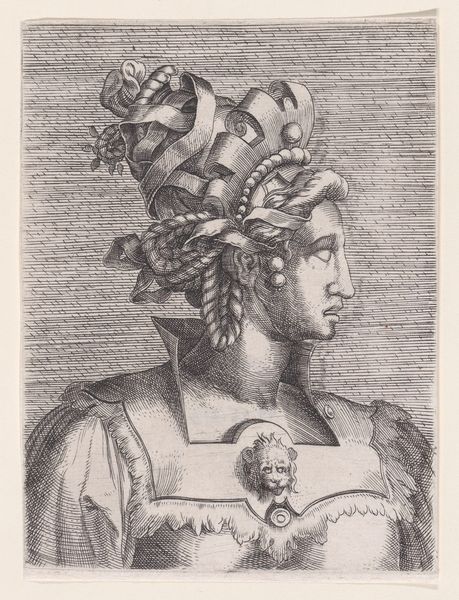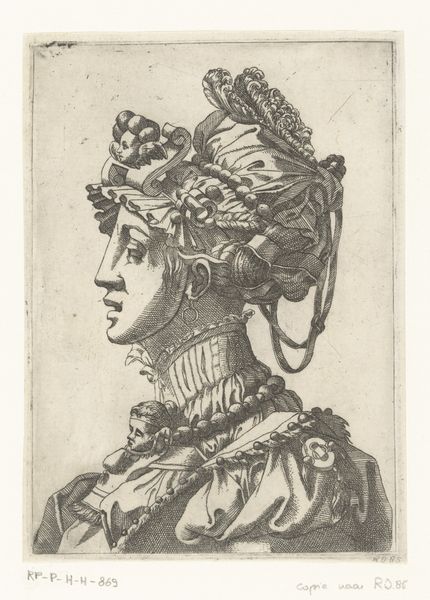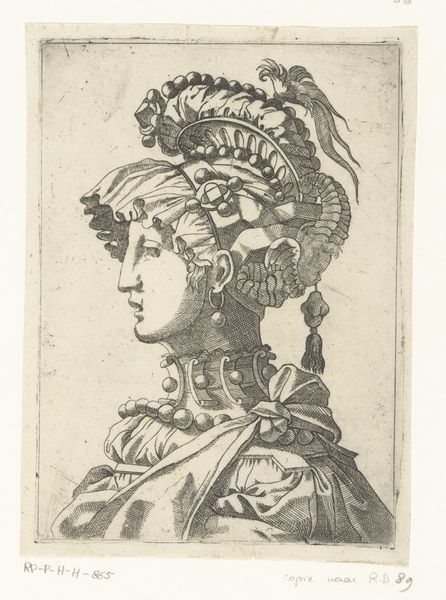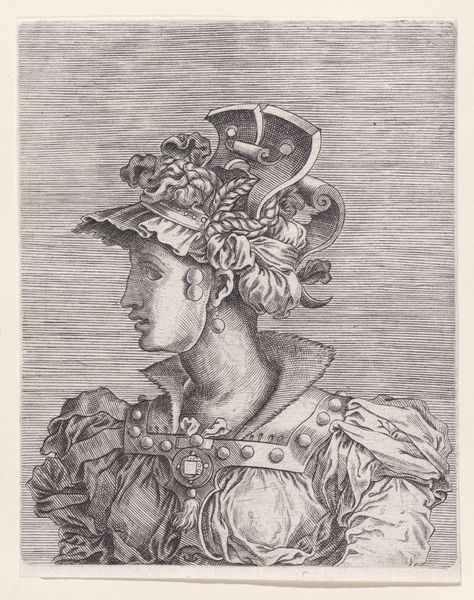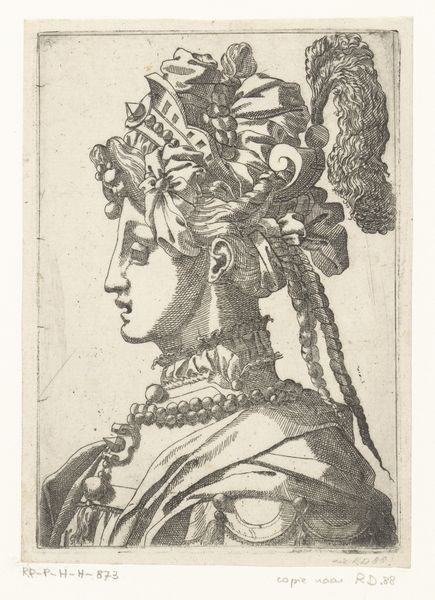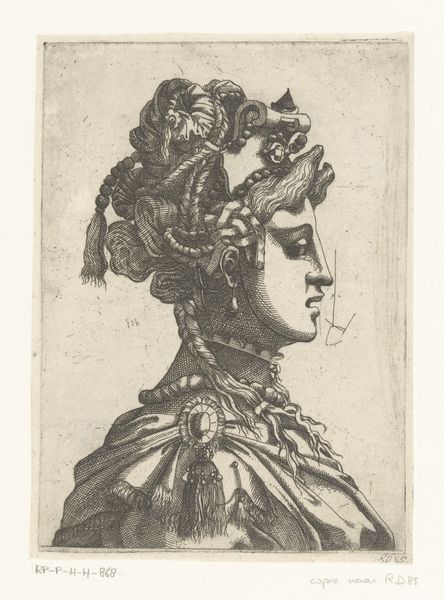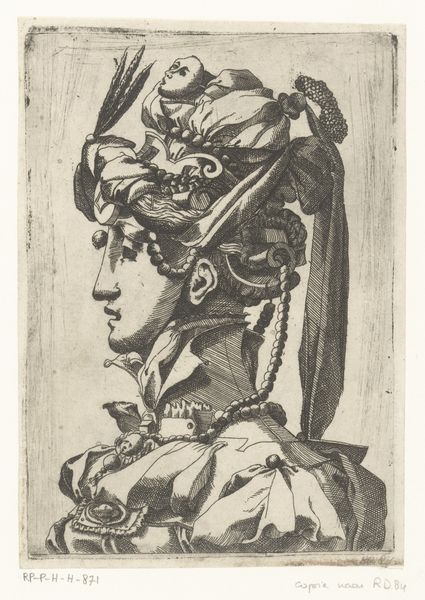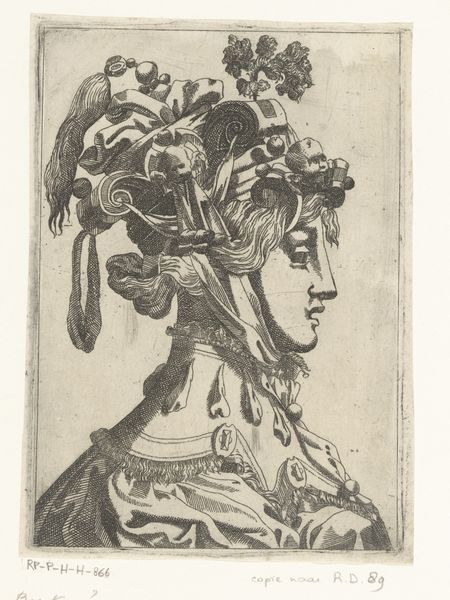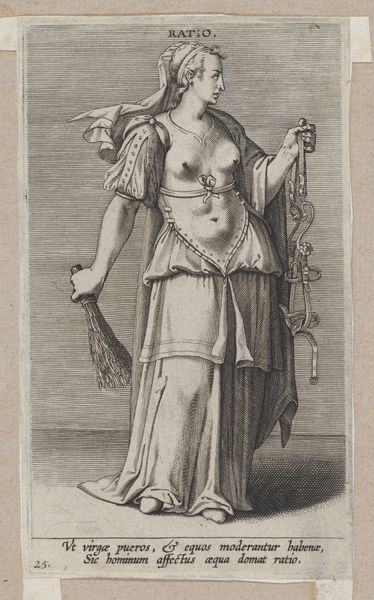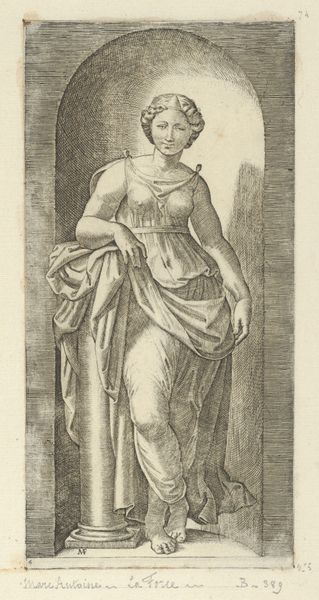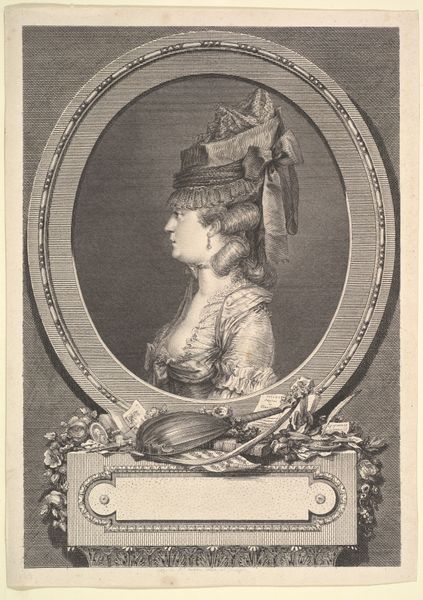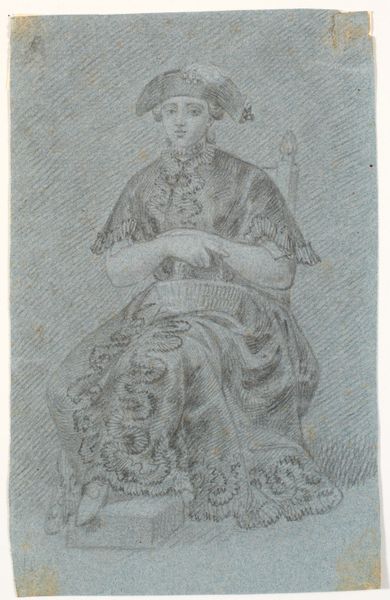
Bust of a Woman Wearing a Fantastic Head-dress and Mask 1525 - 1600
0:00
0:00
drawing, print, engraving
#
portrait
#
drawing
#
facial expression drawing
#
head
# print
#
mannerism
#
portrait reference
#
portrait drawing
#
history-painting
#
engraving
Dimensions: sheet: 5 11/16 x 4 1/8 in. (14.4 x 10.5 cm)
Copyright: Public Domain
Curator: Welcome to the Metropolitan Museum of Art. Today, we are examining René Boyvin's "Bust of a Woman Wearing a Fantastic Head-dress and Mask," an engraving that dates somewhere between 1525 and 1600. Editor: The detail is really impressive. Just look at the textures rendered through line alone. The delicate hatching that models her face juxtaposed against the wilder, almost chaotic lines in her head-dress...it's captivating. Curator: Absolutely, and think about the historical context of this "fantastic head-dress". It speaks to the Mannerist fascination with allegory and extravagant display as signs of power and elite status. Head coverings during the Renaissance and Early Modern Period denoted social class, marital status, religious affiliation and at times even political alliance. Editor: Yes, and from a formal standpoint, it draws my eye directly to her face, anchoring the composition. The cascading beads act like a visual bridge, guiding my eye down to her costume, then back up again. The repetitive use of shapes really brings unity to the piece, with circles and ovals as a constant rhythm. Curator: I wonder what symbolic role masking played for women of status. This print becomes part of a wider historical discourse about feminine identity. It may represent artifice but could signal protection for those traversing powerful courts or political struggles where maintaining power, influence and independence necessitated some measure of obfuscation. Editor: Intriguing. The formal elements alone also express tension. Her expression appears stoic, perhaps reserved, even melancholic. I notice the almost uniform width of lines giving it an intense flattening effect, pressing her closer to the viewer, so one is neither invited nor repulsed by her proximity. Curator: Prints like these allowed ideas about identity and representation to circulate widely. Consider, that engravings often drew from earlier sketches or even paintings. So how were earlier works adapted by Boyvin to fit within a more popular, portable medium, reaching wider audiences? The intersection of these points makes these prints fascinating. Editor: I agree completely. Ultimately, there is something truly evocative and unforgettable about how Boyvin brings texture and life to a portrait rendered in a linear form.
Comments
No comments
Be the first to comment and join the conversation on the ultimate creative platform.
